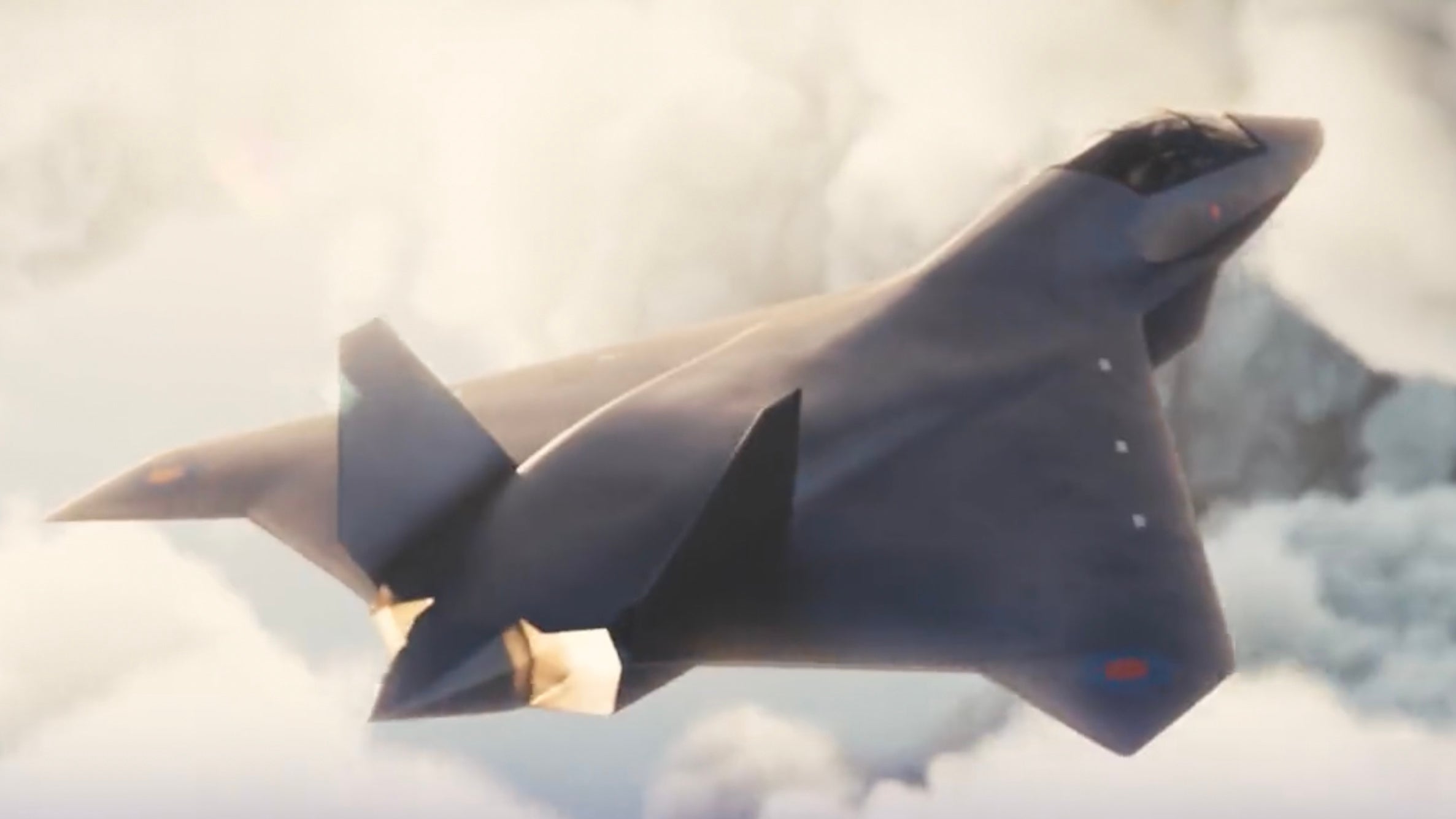The United Kingdom and Japan have announced plans to jointly develop a prototype fighter jet engine as they both pursue programs focused on fielding new-generation fighter jets, under the Tempest and F-X programs. The latest agreement is part of an expanding military relationship between the two countries, which also includes sharing air-to-air missile technologies.
The U.K. Ministry of Defense (MOD) today announced details of the agreement, a Memorandum of Cooperation, within which the Anglo-Japanese fighter jet engine is the flagship item. Work on the joint engine demonstrator will begin early next year with the United Kingdom investing an initial £30 million in “planning, digital designs, and innovative manufacturing developments.”
Beyond that, the MOD says that another £200 million, or around $266.6 million at the present rate of conversion, of funding from the United Kingdom will lead to the development of a full-scale demonstrator power system, which will apparently be built at Rolls-Royce’s Filton facility in Bristol, England. In addition, Mitsubishi Heavy Industries (MHI) and Ishikawajima-Harima Heavy Industries (IHI) in Japan, and BAE Systems in the United Kingdom will be involved.
No details of expected performance have been released and at this stage, it’s unclear if the so-called demonstrator engine will be installed in a flying testbed or if it will be used exclusively for ground-based static trials. It’s also unconfirmed at this stage whether the Tempest and F-X — if they both progress as planned — will be powered by a common engine. Both designs are planned as twin-engine fighters.
“This initiative with Japan is a win-win opportunity to develop world-beating power technologies together,” said Richard Berthon, U.K. Director Future Combat Air. “Investing and working together with Japan to demonstrate highly advanced engine systems will boost our national industries and design a cutting-edge military capability. We’re looking forward to getting started on this work and continuing our discussions on further collaboration.”
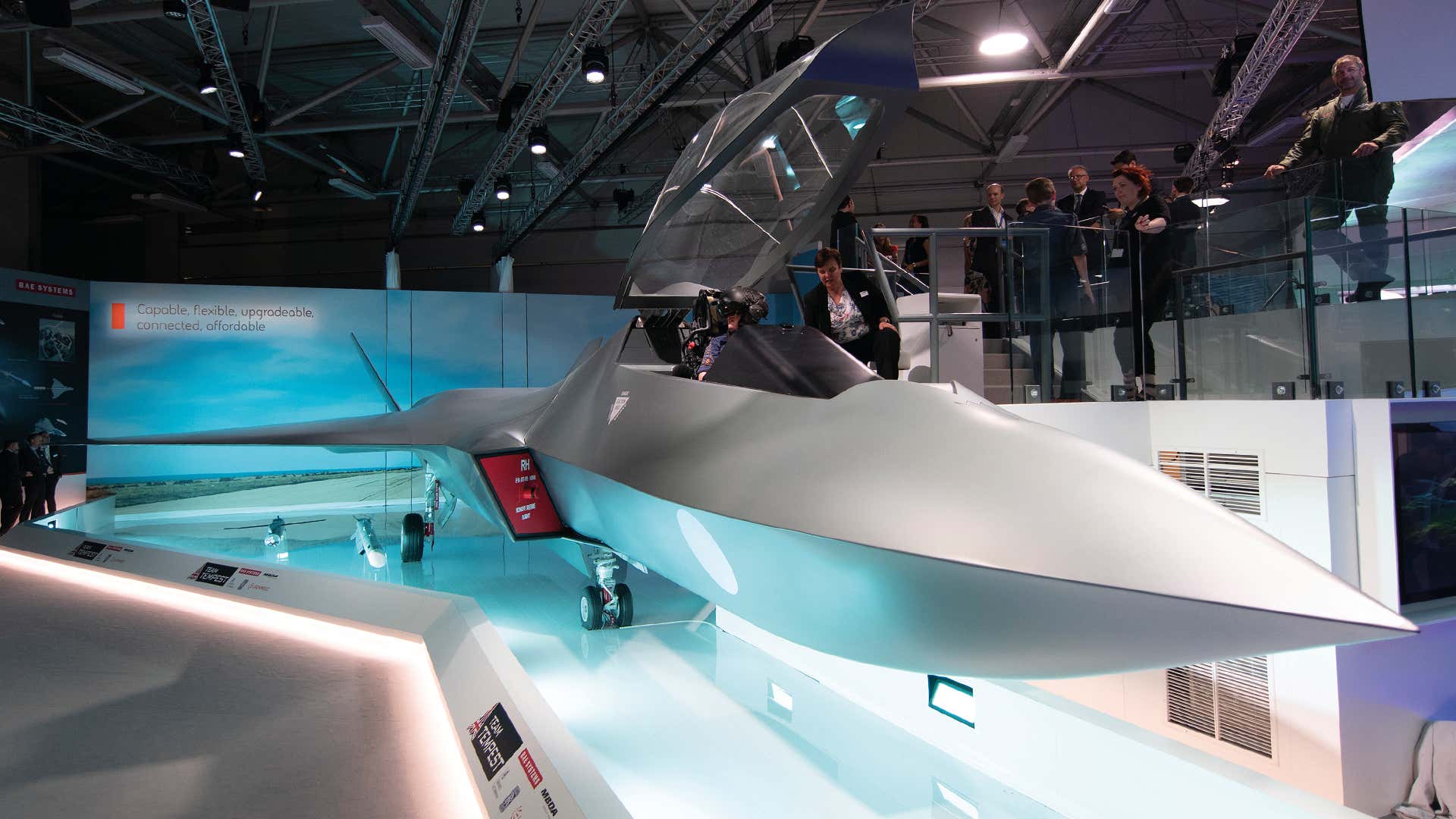
Under the Memorandum of Cooperation, the United Kingdom and Japan will also look at joint work on other technologies connected to the U.K.’s Combat Air Strategy, the centerpiece of which is a manned fighter jet, known as Tempest. Team Tempest also includes Italian defense contractor Leonardo, European missile consortium MBDA, and the British Royal Air Force (RAF), as well as Rolls-Royce.

“The industry teams in both the U.K. and Japan bring complementary technologies that will drive cleaner, next-generation power and propulsion for both nations’ future fighter requirements,” said Alex Zino, Director of Business Development and Future Programs at Rolls-Royce. “The joint engine demonstrator program is an exciting opportunity to bring together some of the best combat air capabilities in the world and will also enable the development of innovative and critical technologies that will be fundamental to the future of the defense aerospace industry.”
We do already know a little about Rolls-Royce’s plans for the Tempest engine, with engineers having already evaluated advanced engine technology. In the past, the company has described a new engine that will burn hotter than its predecessors, boosting efficiency. The British engine company has also been working with Leonardo to manage the heat generated by multiple onboard sensors and avionics by directing this back into the engines for cooling. Team Tempest is also known to have been examining the use of synthetic aviation fuel to reduce exhaust temperatures and also increase sustainability.
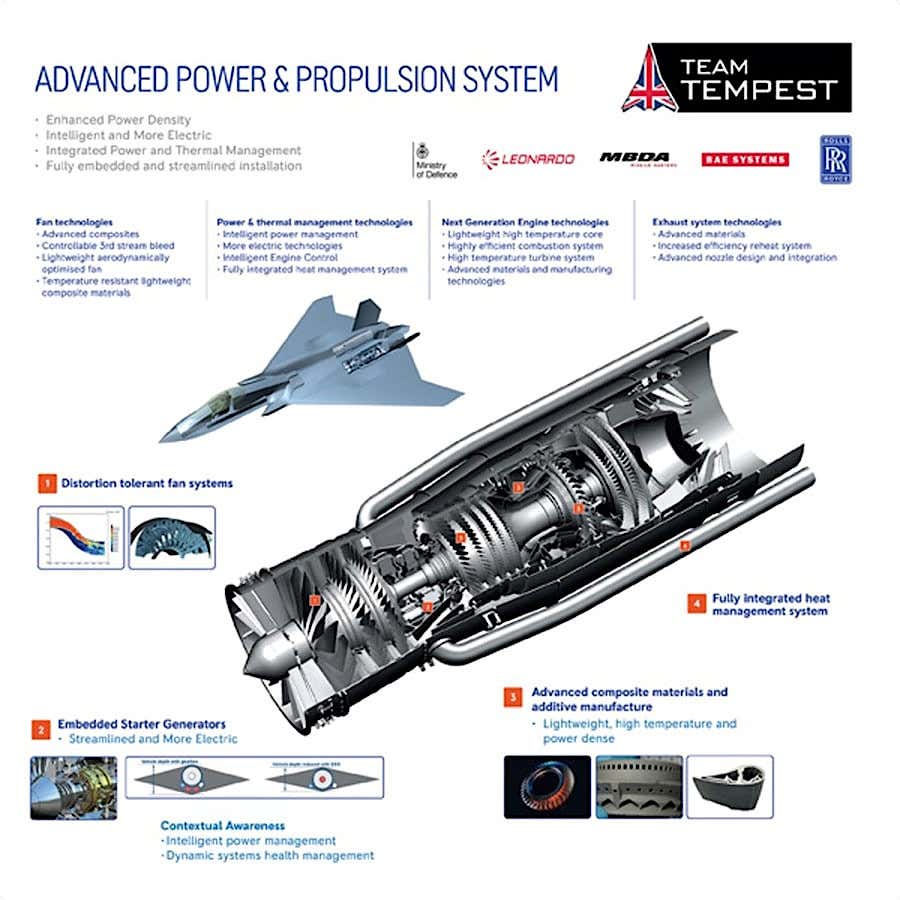
For Japan, meanwhile, the latest agreement with the United Kingdom raises questions about the role of its own fighter propulsion efforts. MHI completed a single example of the X-2 Shinshin experimental aircraft that has been used as a technology demonstrator for its future fighter program.
The twin-engined X-2 is powered by IHI XF5 turbofans, each of which develops around 11,000 pounds of thrust and has thrust-vectoring exhaust paddles for maneuverability. It had been expected that the F-X would eventually be powered by IHI’s in-development XF9 engine, which would have offered significantly more thrust than the XF5. With IHI now collaborating with Rolls-Royce, the role that the XF9 will play within this is not clear.
The United Kingdom is developing the Tempest under the Combat Air Strategy, which is due to receive £2 billion, or around $2.6 billion at the time of writing, in funding over the next four years. The plan is to field a complete Future Combat Air System, including a manned replacement for the Typhoon fighter jet, starting in the mid-2030s.
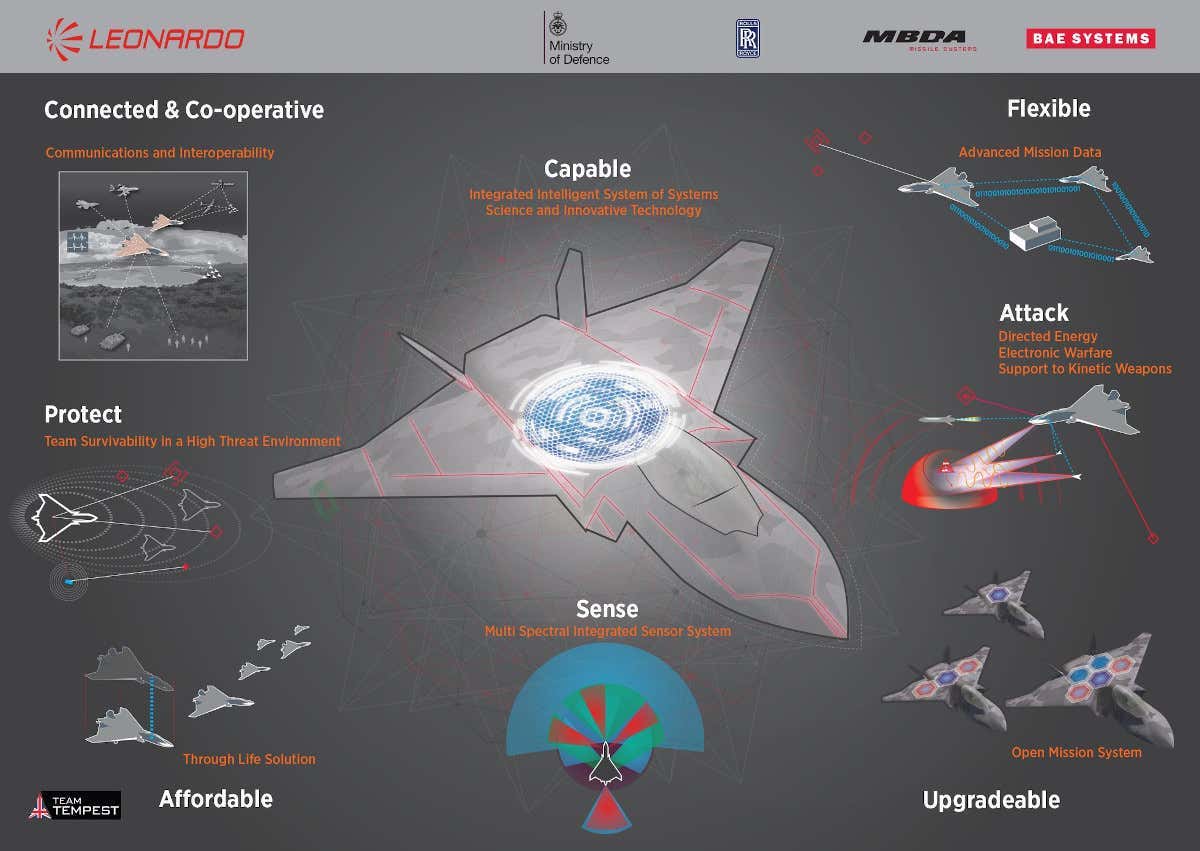
Earlier this year, the U.K.’s Concept and Assessment phase for the Future Combat Air System was launched with a contract valued at £250-million, or approximately $333 million. As well as the Tempest fighter, the U.K.’s Future Combat Air System (not to be confused with the pan-European project of the same name) includes work on unmanned aircraft, sensors, weapons, and advanced data systems.
At the same time, Japan is engaged in its own F-X next-generation fighter program, which plans to provide a successor to the Mitsubishi F-2 over a similar timescale.

Developing an all-new new fighter jet is a significant undertaking and many have questioned whether either the United Kingdom or Japan have developed business models that will be able to succeed without major external support or collaboration. With that in mind, pooling the technological and industrial strengths of the two countries seems to make good sense.
Tokyo and London coming together to develop the new powerplant for their future fighters is also an expression of wider military cooperation between the two countries. Central to this is the United Kingdom increasingly switching its strategic and military priorities to the Asia Pacific region, with an eye on China’s burgeoning territorial ambitions and military expansion.
“Strengthening our partnerships in the Indo-Pacific is a strategic priority and this commitment with Japan, one of our closest security partners in Asia, is a clear example of that,” said U.K. Defense Secretary Ben Wallace in a statement regarding the engine deal.
“As I have seen at first hand our partners in Japan have made enormous progress on technologies that can complement our own advanced skills and could help ensure both our armed forces remain at the forefront of military innovation,” added the U.K. Defense Procurement Minister Jeremy Quin.
The expanding scope of U.K.-Japanese military cooperation was outlined in the U.K.’s Defense Command Paper published earlier this year.
Since then, the Royal Navy’s flagship aircraft carrier HMS Queen Elizabeth completed its first operational deployment, Carrier Strike Group 21 (CSG21), which took it to the Asia Pacific region and included joint maneuvers with Japan.
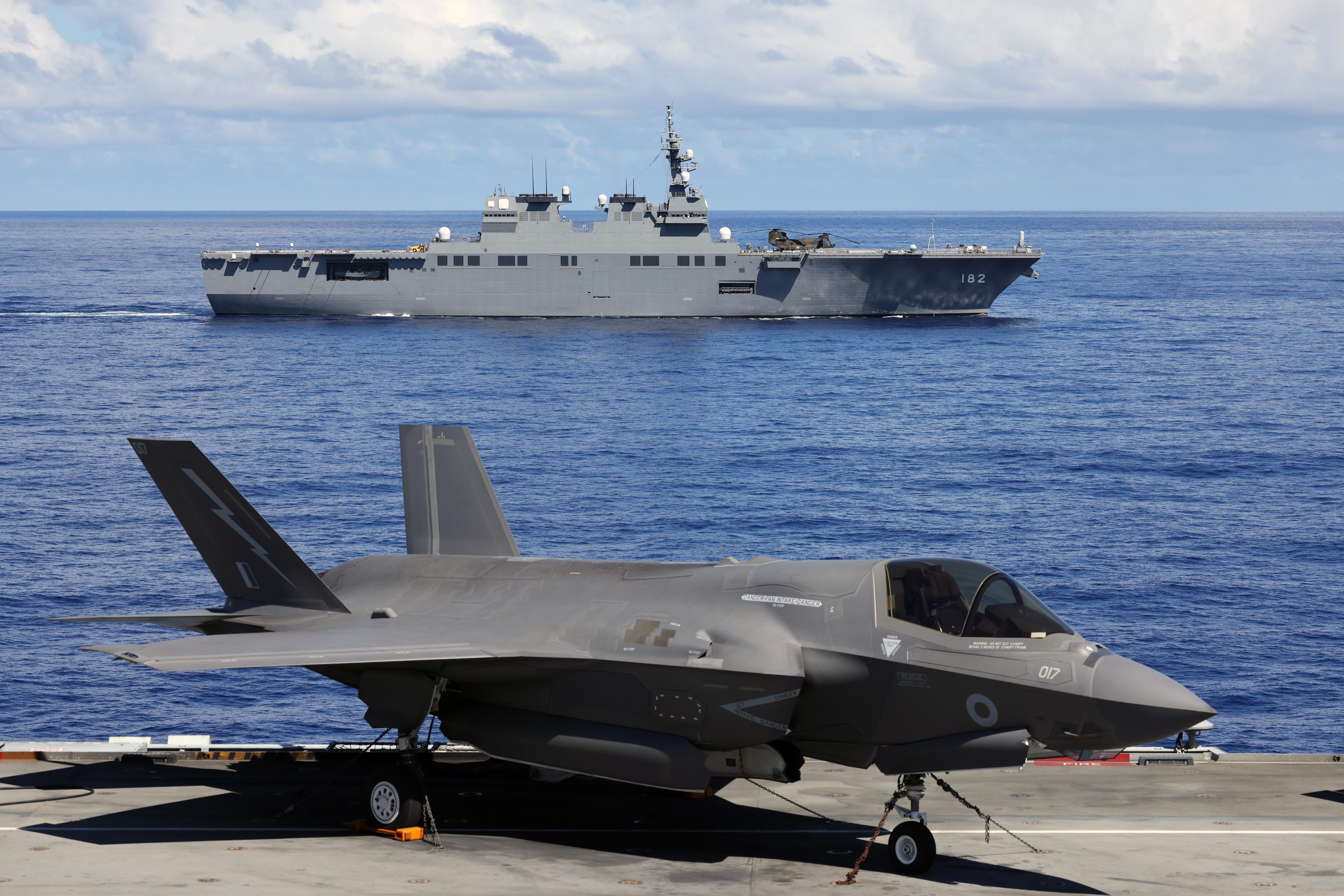
In October, meanwhile, the United Kingdom and Japan agreed to commence formal negotiations on a Reciprocal Access Agreement (RAA) to further deepen their bilateral defense relationship.
Also related to the bilateral cooperation on future air combat technologies is the U.K. MOD’s support to Japan’s Joint New Air-to-Air Missile program, or JNAAM. This weapon is expected to combine British expertise relating to the MBDA Meteor beyond-visual-range air-to-air missile (BVRAAM) with a Japanese-developed advanced radio frequency (RF) seeker.
In addition to Japan, the United Kingdom has been seeking other international partners to join Team Tempest. So far, this has included signing Memorandums of Understanding with Italy and Sweden, with a view to collaborating on future combat air systems and technologies.
In the past, there has been speculation that the rival British-led and Franco-German-Spanish future air combat programs will eventually be brought together.
“It is natural that these two realities will merge into one,” General Luca Goretti, the Chief of Staff of the Italian Air Force, told members of the country’s parliamentary defense committees last month, according to a report from Reuters. “Investing huge financial resources in two equivalent programs is unthinkable.”
However, Air Cdre Jonny Moreton, U.K. Program Director Future Combat Air Program at the MOD, told Tim Martin of Shephard News: “We have absolutely no intention of joining a French-German-Spanish future combat air system program.”
Already, there have been reports in the Japanese press suggesting that the Tempest and F-X will share not only engines but also “air intakes … and the area near the exhaust” and that these components will be optimized for stealth.
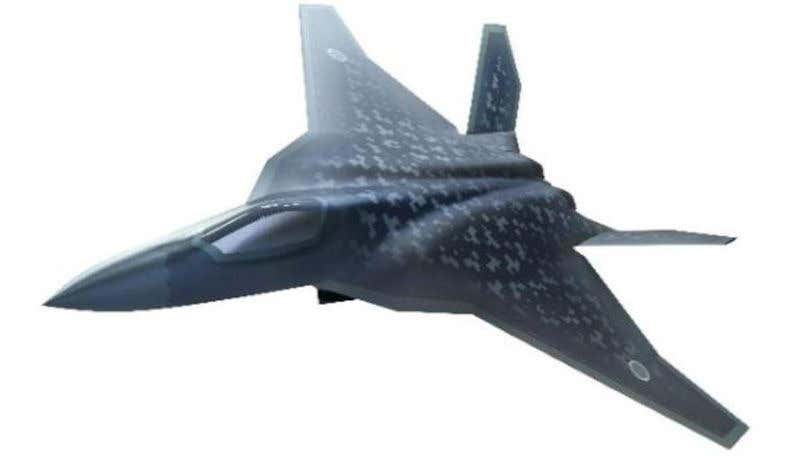
Ultimately, it’s not inconceivable that Japan could merge its own F-X with the British-led project. Japan has already stated its plan to have MHI lead the F-X project, with overall responsibility for the aircraft’s development, but that an overseas partner will also be involved in the program. Whether that partner will be the United Kingdom, or if a U.S. aerospace contractor will step in to work on elements other than the powerplant, is unclear.
While many questions remain about the nature of the new engine and its capabilities, it certainly looks as though Japan is set to become more deeply involved as a Tempest partner.
Contact the author: thomas@thedrive.com
